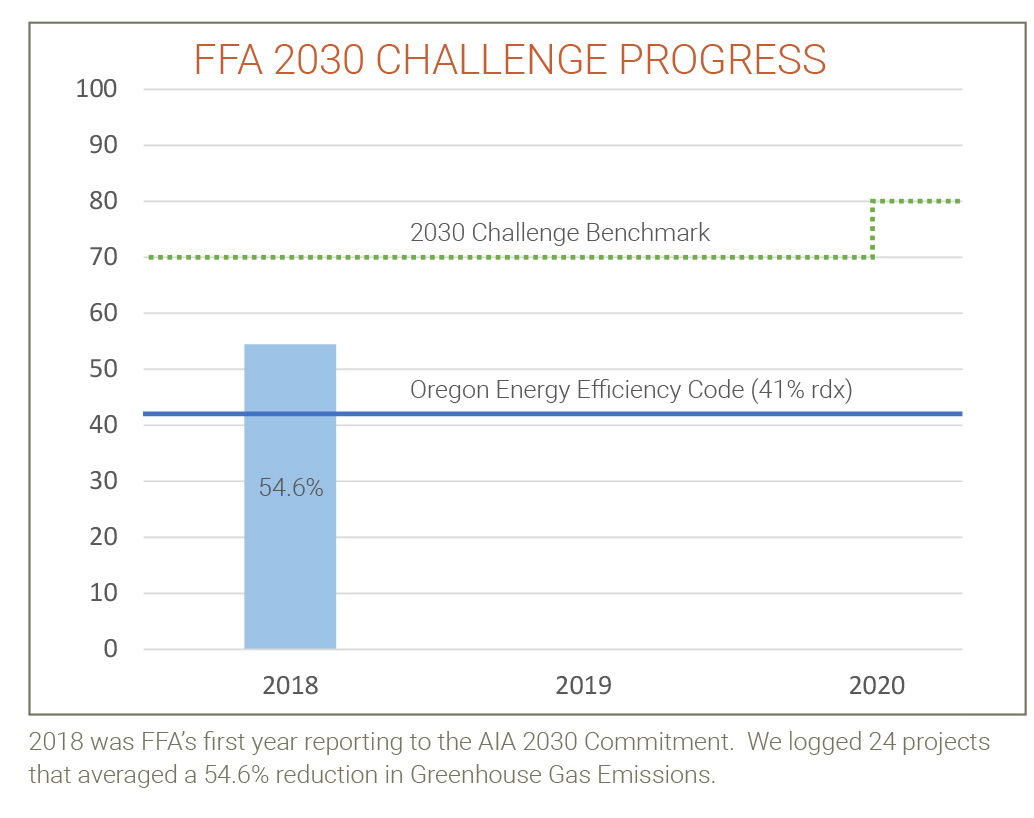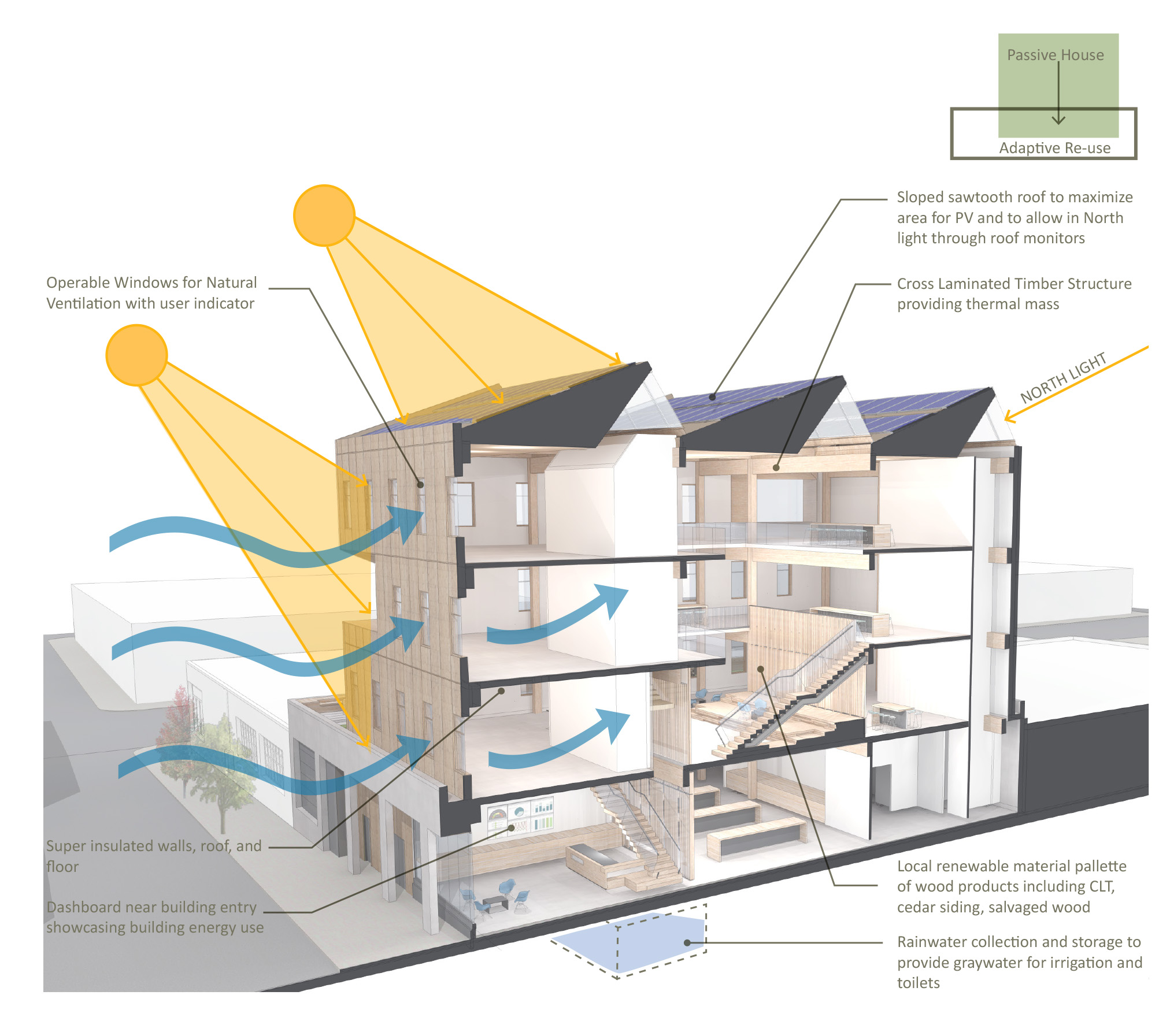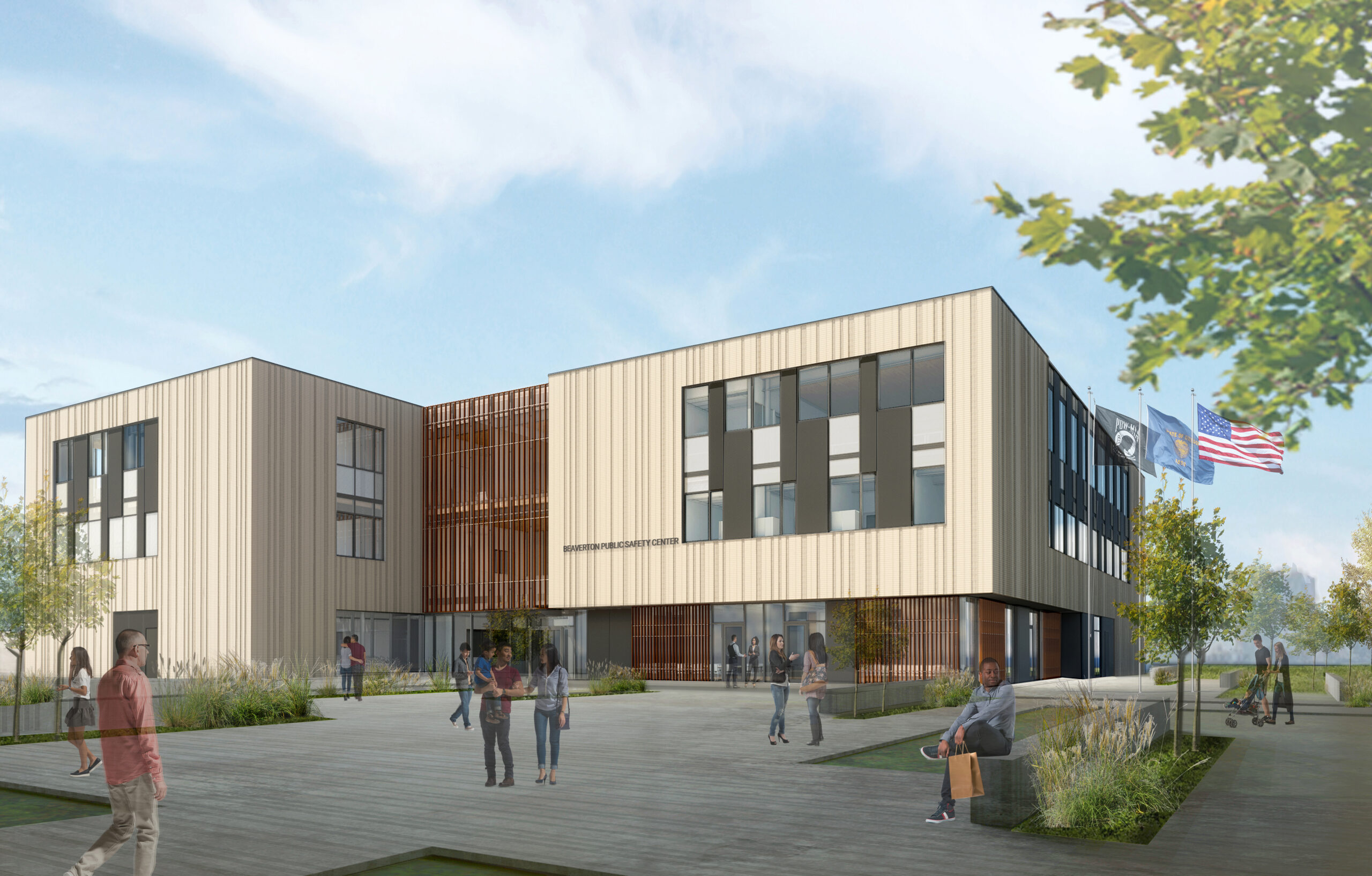At FFA we’ve worked on countless existing structures, the “greenest buildings,” within the context of local and National Parks, and on many civic buildings that set examples for their communities. Our designs take cues from weather patterns, sun angles, local ecology, and the surrounding community and its culture. We view sustainability as the basis of good design, offering durability, natural light, comfort, and wellness to building users, while reducing long-term building maintenance and operational costs. In 2017, FFA committed to taking our sustainability practices to the next level of accountability by signing on to the 2030 Challenge and its offshoot, the AIA 2030 Commitment – a call for buildings designed to reduce greenhouse gas emissions to Net Zero by the year 2030.
As architects, we recognize the buildings we design have one of the greatest single impact on our ever-changing planet. Ed Mazria, the author of the 2030 Challenge, notes that buildings account for nearly 50% of the total energy-use in the United States. We recognize that architects, along with the rest of the A/E/C industry, have a unique and powerful opportunity to make positive change in the ways both new buildings and renovations impact our built environment. By signing onto the 2030 Commitment, FFA agreed to track our projects’ energy use and work with our engineers to significantly reduce energy consumption.


One of the critical steps needed to achieve the 2030 Challenge benchmark is to use energy modeling. Modeling can provide building owners with a clearer understanding of how their building will use energy, where the greatest potential savings may be, what the trade-offs between different building systems offer, and information about pay-back periods and life-cycle costs. We are in the process of creating our own in-house “shoe-box” energy modeling work-flow which will allow us to model projects early in the design process. In the meantime, we currently have three projects being modeled by our consultants that will be reported in 2019.

One of these, the Beaverton Public Safety Center, a new 74,000 sf police station, was modeled to have an 87% reduction from the 2030 baseline EUI (Energy Use Intensity), which is average/median energy consumption for that building type. As an essential public facility, it is important for the building to be fully functional in the event of an emergency which might trigger a significant power failure. Increasing the performance of the exterior envelope, providing radiant heating and cooling in the floor slab, and carefully zoning the building will allow the mechanical system to perform more efficiently, a critical step for resiliency. This strategy, along with designing a solar PV system that covers the entire roof and both carport canopies, contributed to a highly-efficient and resilient building design that will serve as an example for its community and for our firm.
Our goal is to continue to build on the lessons we’ve learned from this project as well as to track all of our projects through the 2030 Commitment to create inspiring architecture with net-zero greenhouse gas emissions. We understand the impact humans and the built environment have on our climate, and FFA is dedicated to learning from and improving upon our designs in order to minimize our environmental footprint and promote a green future.

